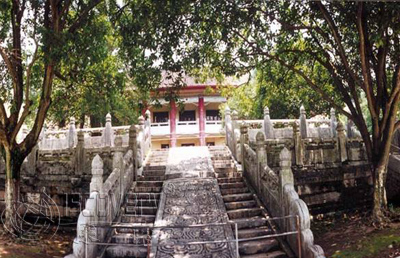Jing Wang's mansion is a miniature of Ming Neigong in Jinling (1)
In the 28th year of Zhi Zheng during the late Yuan Dynasty (AD 1368), Zhu Yuanzhang, a farmer by origin, utilized the power of the peasant uprising army to overthrow the Yuan Dynasty and established the Ming Dynasty under the Zhu family. In order to "assist the royal family" and consolidate the unified rule of the Zhu family, Emperor Taizu Zhu Yuanzhang adopted the policy of "building many relatives to support the royal family". In the second year of Hongwu (AD 1369), he established the system of feudal kings, and in the following year on April 7th, he enfeoffed his princes as kings in various important places. Among the first ten enfeoffed kings, Zhu Shouqian, his great-nephew, was specially appointed as the King of Jingjiang. In the fifth year of Hongwu (AD 1372), the King of Jingjiang sent officials ahead to Guilin to choose the location for the mansion at the foot of Duxiu Peak, and expanded the Wan Shou Hall, which was the former residence of Emperor Shun of Yuan, into the royal palace. Then, tens of thousands of soldiers and civilians were mobilized for construction. In the ninth year of Hongwu, Zhu Shouqian arrived in Guilin with the royal palace fleet to take up his post. However, the construction of the Jingjiang Royal Palace was extremely extravagant, undergoing initial construction and reconstruction. The palace, which took twenty years to build, was completed just in time for the city walls to be built around it, and then it was reconstructed again. During the Hongwu period, Professor Chen Lian, who participated in the compilation and revision of the "Gui Lin Jun Zhi", drew a map of the Jingjiang Royal Palace that has been preserved. According to the map and field investigations, the layout of the royal city is backed by mountains and beside water, with outer city walls surrounding the inner mansion. The royal palace faces south from the north, and there are three major buildings on the central axis paved with stone slabs: the Chengyun Gate in front, the Chengyun Hall in the middle, and the quadrangle-style bedroom palace at the back. There are also ancestral temples on the left, altars on the right, and finally the imperial garden.
